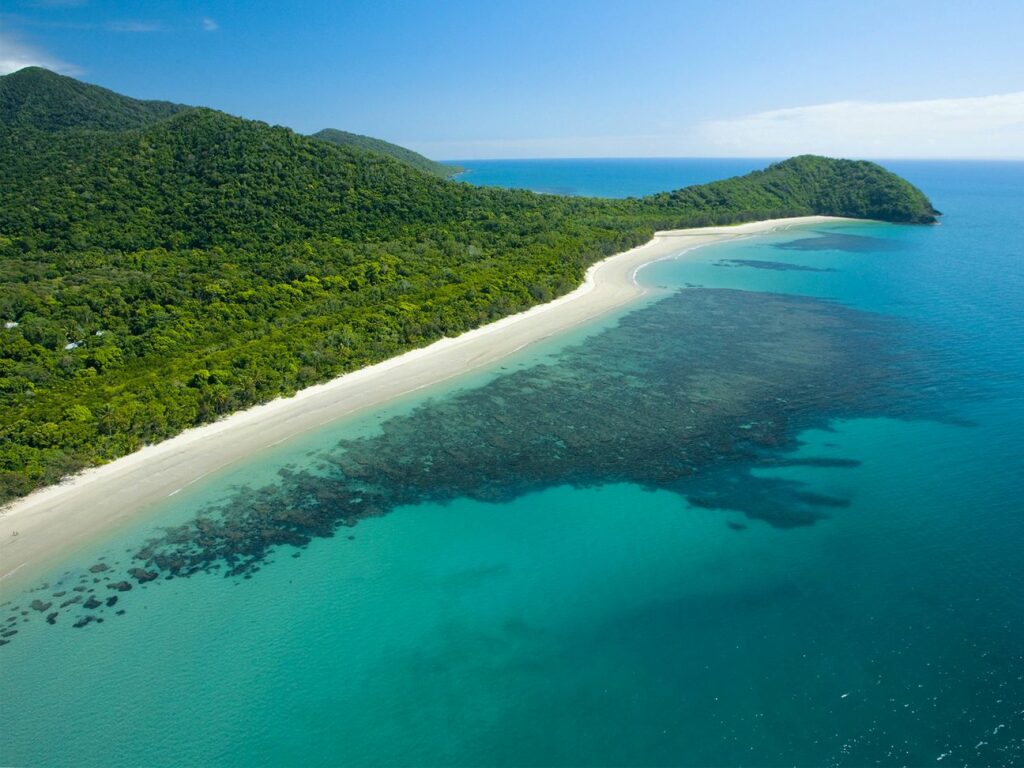Daintree Rainforest: Exploring the Oldest Rainforest on Earth

Nestled in the tropical north of Queensland, Australia, the Daintree Rainforest stands as a living testament to the wonders of nature and the resilience of ancient ecosystems. Spanning over 1,200 square kilometers (460 square miles), this lush wilderness is not only the oldest continuously surviving rainforest in the world but also one of the most biodiverse, boasting an extraordinary array of plant and animal species found nowhere else on Earth. From its towering canopy and crystal-clear streams to its hidden waterfalls and secluded beaches, the Daintree Rainforest offers an unparalleled opportunity to immerse oneself in the beauty and majesty of the natural world.
Ancient Origins:
The Daintree Rainforest is believed to be over 180 million years old, making it one of the oldest rainforests on the planet. Its origins can be traced back to the breakup of the supercontinent Gondwana, which began around 200 million years ago, and the subsequent isolation of Australia from the other landmasses. Over millions of years, the Daintree Rainforest evolved in isolation, giving rise to a unique and diverse ecosystem that is now recognized as a UNESCO World Heritage-listed site.
Biodiversity Hotspot:
The Daintree Rainforest is renowned for its unparalleled biodiversity, with an estimated 30% of Australia’s frog, reptile, and marsupial species, 65% of its bat and butterfly species, and 18% of its bird species found within its boundaries. The rainforest is also home to a staggering variety of plant species, including ancient ferns, towering trees, and colorful orchids, many of which are endemic to the region.
One of the most iconic residents of the Daintree Rainforest is the endangered Southern Cassowary, a large flightless bird known for its striking blue and black plumage. Other notable inhabitants include the elusive Lumholtz’s Tree Kangaroo, the vibrant Ulysses Butterfly, and the prehistoric-looking Boyd’s Forest Dragon.
Ecosystem Diversity:
The Daintree Rainforest is characterized by its rich tapestry of ecosystems, which range from lush lowland rainforests and mangrove swamps to rugged mountains and pristine rivers. The rainforest’s complex topography and diverse microclimates support a wide variety of habitats, each with its own unique flora and fauna adapted to its specific environmental conditions.
The Daintree River, which meanders through the heart of the rainforest, is home to a thriving population of estuarine crocodiles, whose presence serves as a reminder of the ancient origins of this pristine wilderness. Visitors can explore the river on guided wildlife cruises, offering opportunities to spot crocodiles, birds, and other wildlife in their natural habitat.
Cultural Significance:
For the Indigenous Kuku Yalanji people, the Daintree Rainforest holds deep cultural significance as a source of spiritual nourishment and ancestral connection. The rainforest is woven into the fabric of their identity, providing sustenance, shelter, and cultural inspiration for countless generations.
The Kuku Yalanji people have a rich oral tradition of Dreamtime stories and cultural practices that are passed down through storytelling, song, and ceremony. These stories explain the origins of the land and its inhabitants and offer valuable insights into the interconnectedness of all living things.
Tourism and Conservation:
The Daintree Rainforest is a popular destination for eco-tourists, nature enthusiasts, and adventure seekers seeking to explore its natural wonders and cultural heritage. Visitors can embark on guided walks through the rainforest, swim in secluded waterholes, and discover hidden treasures such as the Mossman Gorge, where crystal-clear waters cascade over ancient granite boulders.
While tourism provides economic opportunities for local communities, it also presents challenges for the conservation of the rainforest’s fragile ecosystems. Efforts are underway to promote sustainable tourism practices, such as low-impact ecotourism initiatives, responsible wildlife viewing guidelines, and community-led conservation projects that empower Indigenous communities to protect and manage their ancestral lands.
Conclusion:
In conclusion, the Daintree Rainforest is a true marvel of nature – a timeless wilderness of unparalleled beauty, biodiversity, and cultural significance. Whether you’re exploring its ancient canopy, listening to the symphony of wildlife, or learning about its Indigenous heritage, the Daintree Rainforest offers an unforgettable journey into the heart of the natural world. So, pack your bags, venture into the depths of the rainforest, and experience the wonder and magic of the Daintree for yourself.




